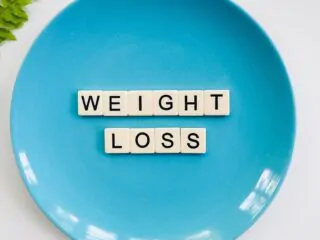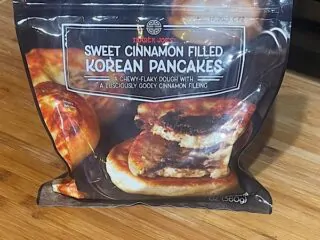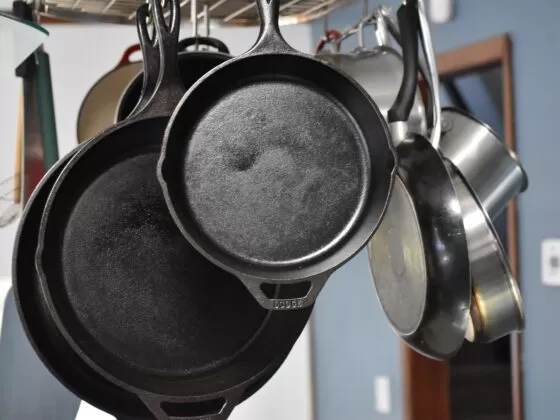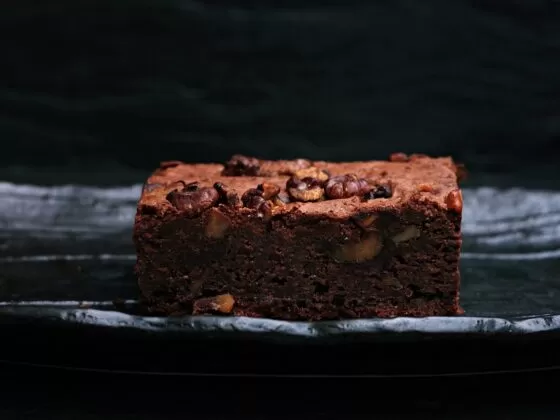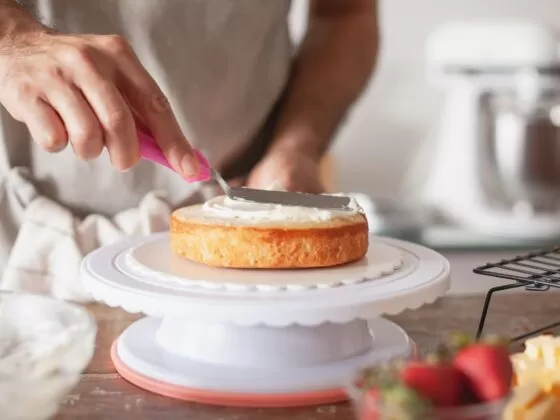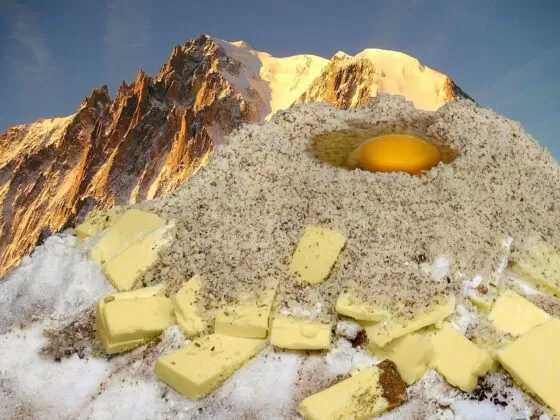If you enjoy cooking and baking, chances are you’ve got a small collection of different types of flour. All-purpose flour, bread flour, self-rising flour, cake flour – that’s not even to mention the world of whole grain and gluten-free varieties! Flour is the core of just about every baked item consisting of dough or batter. It acts as the framework to bind together the liquids, fats and sugars that comprise a cake. No matter how confident you are in using each type of flour in your pantry, you may still be unsure of the specific differences between them and how to combine or swap them in a pinch.
Although they’re not on complete opposite ends of the flour spectrum, cake flour and plain flour are different in several ways. Cake flour or extra fine flour is a finely milled low protein flour made from soft wheat that commonly contains between 6-7% protein. Cake flour is typically bleached although unbleached varieties do exist, albeit with higher protein content. Plain or all-purpose flour is made from a hard wheat blend and has a protein content typically between 9.5-11.5%. These characteristics of cake flour result in less gluten formation and better water absorption when mixing and therefore a taller and fluffier cake.
While cake flour and plain flour aren’t the same, it is possible to use one when a recipe calls for the other – you just need to know what you’re doing. Thankfully, you’ve come to the right place. We’ll break down everything you need to know to understand the chemical makeup of each type of flour. This way you can easily substitute next time you’re baking and find yourself understocked in a certain flour. Read on to learn everything you need to know about cake flour.
So, What’s the Difference Between Cake Flour and Plain Flour?
Before we can really understand cake flour, it’s best to take a close look at all-purpose flour. Getting to know the most common and versatile flour will help to see what sets others apart. All-purpose flour, also called AP or plain flour, is the standard plain flour used in baking anything. If your recipe simply says “2 cups flour,” all-purpose is likely what you’d reach for. It’s a white flour made of the endosperm of both hard and soft wheat varietals.
Part of what makes all-purpose flour such a popular pantry product is its long shelf life. In brief, this is achieved by removing the wheat kernel’s bran and germ components. These components of the wheat contain oils that make flour spoil more quickly. By removing them, the result is a flour that lasts 8 months vs 5 months for other flours.
Plain flour can be used in a whole host of sweet and savory cooking and baking situations, including bread, cookies, pie crusts, dredging foods on their way to the fryer, or thickening sauces. But depending on what you’re making, plain flour may impede your efforts to create certain textures in your baked goods.
Cake flour is best used when you’re working to achieve light, fluffy, tender baked goods like, you guessed it, cakes. It’s better suited to invoking these textures because it is made from different types of soft wheat. For instance, soft red winter wheat which is ground very, very fine. These elements result in lighter, softer baked goods.
Cake Flours’ Lower Gluten Protein Content = More Crumbly and Less Chewy
Another factor that helps cake flour produce such soft and fluffy goods is its low gluten protein content. Milled from soft wheat, cake flour is naturally low in gluten content. As a result, it contains less protein overall than something like all-purpose flour. While all-purpose has about 9.5 to 11.5% gluten protein, cake flour is almost half of that at a mere 6-7%.
Lower gluten and protein levels create softer, more delicate treats. If it’s more solid, heartier items you’re looking to bake, then flour with more gluten and protein is better suited. This doesn’t mean that cake flour or all-purpose flour can’t be used in a recipe that calls for a different type of flour. It does, however, require that you know how to treat it first in order to yield the desired outcome. In baking as in life, knowledge is power.
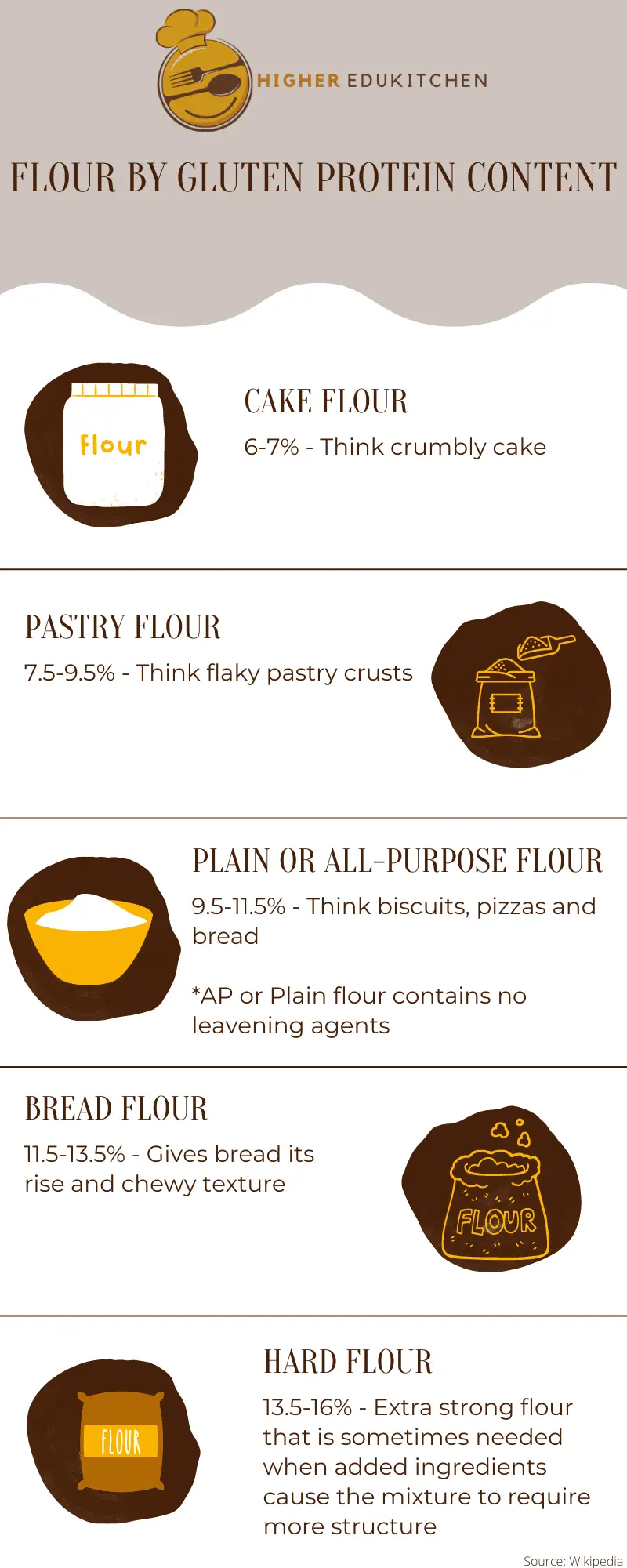
Cake Flour is Bleached = Sturdy Structure for Binding
What effect does bleaching have on flour? It depends on the type of flour that’s being bleached, as different types of bleach are used for each flour type. Cake flour is bleached most often with chlorine bleach, which is much stronger than peroxides commonly used on all-purpose flour. Chlorine interacts with the starch, protein, and fat in flour, but the exact effect this has on the flour is still being researched. What is known for sure at this point is that bleached cake flour is more well equipped to form a matrix that can successfully hold a high-ratio cake together.
Cake Flour is Finer = Better Liquid Absorption
While plain flour may feel finely ground to the touch, not all flours are the same consistency – and this has an impact on your baked goods. Cake flour is a very fine flour. In fact, many avid bakers refer to it as extra fine or super fine flour instead of cake flour. The extra fine grind on cake flour allows it to absorb more water than a coarser flour.
What does increased water absorption mean for your finished product? It could mean a fine crumb or a softer texture in sweetbreads. Extra absorption also helps cake batters rise taller than a coarser flour would, meaning that this type of flour allows bakers to create taller, fluffier cakes.
The other side of this, however, is that you must account for this extra liquid absorption when you’re substituting cake flour for another type of flour in a recipe – a 1:1 swap will not work unless your moisture content is also adjusted. Keep this in mind when incorporating cake flour into your kitchen practices, otherwise your efforts to create tall, fluffy, soft cake may come out a bit more on the dry side.
Even Distribution of Fats = No Clumping
Another great aspect of baking with cake flour is the way it allows you to distribute fats more evenly. This is due to the fine grind of this flour variety. Because of this more thorough fat distribution, your cakes will have far fewer or no clumps of butter at all. This will also help your cakes set up faster. The result? Tall, tender, beautiful cakes every time!
Can You Substitute Plain Flour for Cake Flour?
Because of the low protein content of cake flour, it is not advised that you substitute cake flour for a flour that has a higher protein content, like all-purpose flour. Baking is at its core a science. While the moisture content and other factors can be compensated for, things like protein cannot be adjusted and will impact the final result of your baked goods.
How To Make a Cake Flour Substitute?
Since we know that substituting plain flour for cake flour isn’t the best idea. If you’re out of cake flour, you can make a faux cake flour using other pantry staples in a pinch. Of course, the best results will come from using true cake flour, but this substitution will simulate the effect well enough until you can get to a grocery store. Here’s how you make it:
- Examine your recipe. For every cup of cake flour called for, measure one cup of all-purpose flour.
- For each cup of all-purpose flour measured, remove 2 tablespoons of flour and return it to your flour container – you won’t need them for the substitute.
- Add in 2 tablespoons of cornstarch for each cup of all-purpose flour (you’re essentially swapping the removed flour for cornstarch).
- To combine, sift this mixture four to five times. Don’t skip this step! Since cake flour is a highly sifted flour, thoroughly sifting your substitute will help simulate the results of true cake flour.
Can You Substitute Cake Flour for Plain Flour?
Perhaps due to an extra batch of cookies you’ve exhausted your plain flour and all that’s left is cake flour. Because of its fine consistency, cake flour is typically too delicate for most baking applications. If you’re really in a pinch and cake flour is all you’ve got left, all hope is not lost. To substitute cake flour for plain flour. Gently sift and then measure 1 cup plus two tablespoons of cake flour for every 1 cup of plain flour.
Why It’s Important to Weigh Your Dry Ingredients?
To make your baking endeavors even more successful, try measuring your flour by weight, rather than in cups. Doing so will help you get the most accurate amount of flour possible. Measuring by volume can fluctuate based on humidity levels and other environmental factors. To get the right amount every time, use a food scale.
If you don’t currently own a food scale here are two we highly recommend. The OXO good grips 11-lb food scale and the basic digital scale from Taylor.
At around $50 as of the time of this writing, we love the OXO good grips 11-lb food scale. It has all of the features you would expect and want on a kitchen scale. What sets this scale apart from the others is that it was thoughtfully designed with the home baker in mind. OXO included pull-out display so that the weight is visible when measuring your ingredients in a large mixing bowl.
At $22 as of the time of this writing, the basic digital food scale from TAYLOR is another great option. If you’re new to baking or are looking for a simple and inexpensive digital kitchen scale you can’t go wrong. We used the Taylor scale for 5 years before we upgraded to the OXO. It can measure in oz, lb;oz, g, fl oz, and mL in increments of 0.1oz, 0.001kg, 0.1fl oz and 1mL.
Whether you choose a feature rich scale with added convenience or a basic scale which will get the job done. Using a scale to properly measure out your ingredients will make your cakes and baked goods go from good to great!
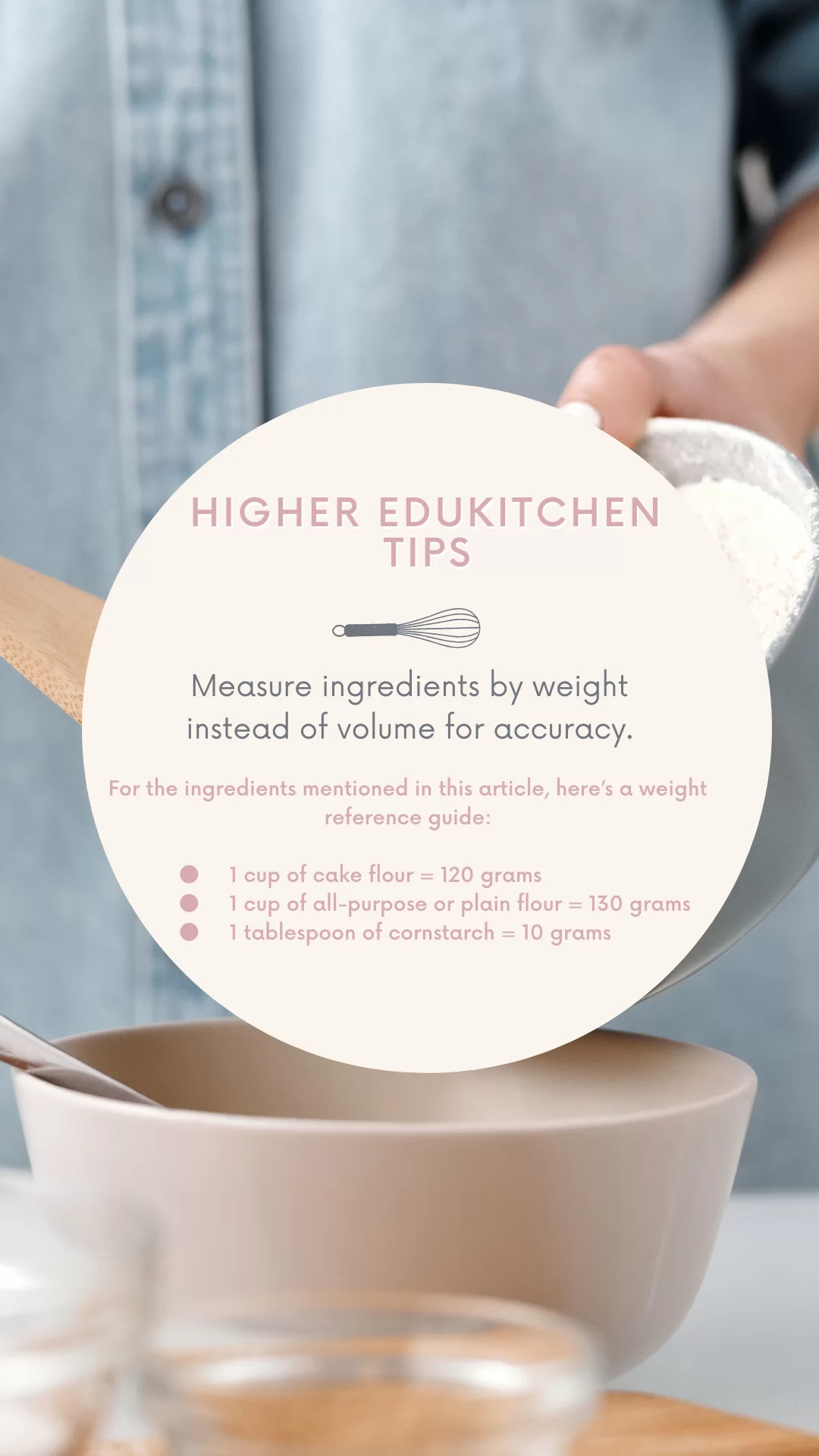
Baking beautiful, delicate cakes is not such a difficult task. It’s made even easier by understanding the ingredients you’re using and how various factors impact their ability to perform in your kitchen. We hope this article has given you a better understanding of the three tenets of working with flour.
- Learning the significance of flour grind and protein content.
- The impact of fat distribution.
- Accurately measuring your ingredients.
Now you’re well on your way to baking bliss. Try using cake flour in your next kitchen experiment – and if you don’t have any, give the substitute recipe above a try. Happy baking!

